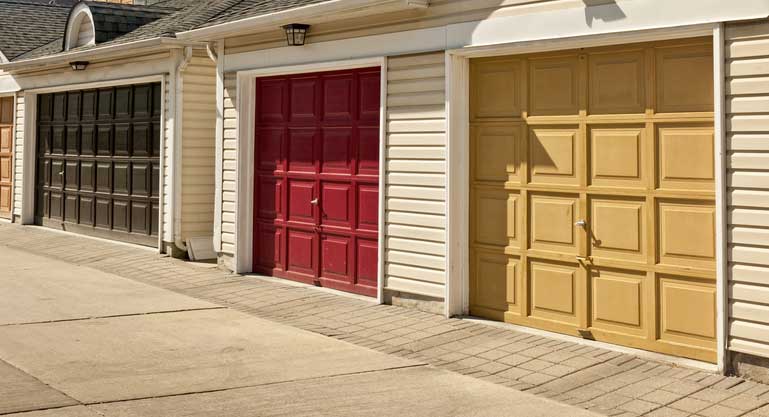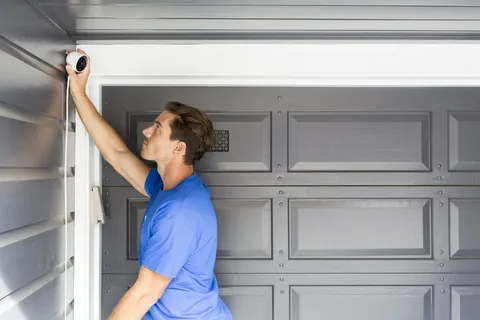What Are the Common Mistakes to Avoid During Garage Door Installation?
Installing a garage door might seem like a straightforward task, but it requires careful planning, precision, and knowledge of the system’s components. Even the smallest mistake can lead to issues such as poor performance, safety hazards, or unnecessary repairs. To ensure a smooth and successful garage door installation, it’s essential to avoid certain common mistakes. Here’s a guide on what to watch out for when installing your garage door.
1. Ignoring Safety Precautions
Safety should always be a top priority during garage door installation. One of the most common mistakes people make is not adhering to safety protocols. Garage doors are heavy and can be dangerous if not handled properly. Improper handling or installation can lead to accidents, injuries, or even fatalities.
Always use the proper safety gear, including gloves, goggles, and sturdy footwear. Ensure that you have a second person to help with lifting and securing the door, as garage doors are often too heavy to handle alone. If you are unsure of the installation process, it’s best to hire a professional who is trained to safely install garage doors.
2. Incorrect Measurements
Accurate measurements are critical for a proper garage door fit. One of the most frequent mistakes during installation is not measuring the garage opening correctly. If the measurements are off, the door might not fit properly, leading to issues such as drafts, difficulty operating the door, or misalignment.
Before purchasing a garage door, carefully measure the width, height, and depth of the garage opening. It’s essential to measure at several points to ensure the opening is square and level. Taking accurate measurements will help you choose the right door size and avoid costly mistakes during installation.
3. Skipping the Professional Installation
While DIY projects can be rewarding, garage door installation is a task that is best left to professionals in many cases. A common mistake homeowners make is attempting to install a garage door themselves without the necessary skills or tools. The installation process requires precision, as even minor errors can affect the door’s functionality and safety.
Professional installers are trained to ensure the door operates smoothly and is properly balanced. They also have the right tools to complete the installation quickly and safely. If you’re unsure about your abilities or the complexity of the door system, consider hiring a qualified technician.
4. Failing to Level the Tracks
The tracks of a garage door play a critical role in its operation. If the tracks are not level and aligned, the door will have trouble opening and closing smoothly. One of the most common installation mistakes is failing to level the tracks correctly. Misaligned tracks can lead to problems like jerky movements, unnecessary wear on the door’s components, and even system failure.
To avoid this mistake, make sure the tracks are properly installed and aligned before attaching the door. Use a level to check that the tracks are even and adjust them as needed. Ensuring proper alignment from the start will prevent operational issues down the road.
5. Improper Spring Tension
Garage doors rely on springs for proper function, and ensuring the correct spring tension is vital for smooth and safe operation. Over-tightening or under-tightening the springs can cause the door to function improperly, or worse, result in damage to the system.
A common mistake during installation is adjusting the spring tension incorrectly. Springs that are too tight can cause excessive strain on the door’s motor, while loose springs can cause the door to become unbalanced or fail to open and close as it should. It’s essential to follow the manufacturer’s guidelines when adjusting the spring tension, or better yet, leave this job to a professional to ensure the correct balance is achieved.
6. Neglecting to Secure the Door Properly
Securing the garage door properly is crucial to its functionality and safety. A common mistake is failing to properly fasten all the components, such as the brackets, tracks, and panels. Loose components can cause the door to operate erratically or even fall off its tracks, which could lead to serious damage or injury.
During installation, take the time to ensure that all parts of the door are securely fastened and that no bolts or screws are left loose. Double-check all fasteners and connections before testing the door to ensure everything is tightly in place.
7. Skipping the Insulation
If you live in an area with extreme temperatures, insulation is an important feature to consider when installing your garage door. Some homeowners make the mistake of choosing a door without proper insulation, assuming it’s not necessary. However, insulated garage doors offer better temperature control, soundproofing, and energy efficiency.
If your garage is attached to your home or serves as a workspace, insulated doors can help maintain a comfortable temperature and reduce energy costs. Ensure that the door you choose has the appropriate insulation and seals to keep your garage properly regulated.
8. Ignoring Proper Lubrication
Garage doors contain many moving parts, including springs, rollers, and hinges, all of which require lubrication for smooth operation. A common mistake during installation is neglecting to lubricate these components, which can lead to friction, excessive wear, and premature failure of parts.
Once the garage door is installed, apply a lubricant specifically designed for garage doors to all moving parts. Regularly lubricating the components can help extend the life of your door and ensure it operates quietly and efficiently.
9. Not Testing the Door Properly
After completing the installation, it’s crucial to test the door thoroughly to ensure it’s working correctly. Many people skip this step or fail to test the door under different conditions, such as fully opening and closing it several times or testing the auto-reverse safety feature.
To ensure that the door is operating properly, open and close it multiple times and check for smoothness. Test the remote and wall switch controls, and verify that the door is properly balanced. Also, check the auto-reverse function to ensure that the door will reverse direction if it encounters an obstruction. Proper testing ensures the garage door is safe and functional before regular use.
10. Overlooking Maintenance Needs
A garage door requires ongoing maintenance to keep it running smoothly. Failing to consider maintenance requirements during installation can lead to costly repairs or even early replacement. Homeowners often make the mistake of ignoring long-term maintenance needs after installation.
After the installation, create a maintenance schedule to keep the door in good working condition. Regular tasks include lubricating moving parts, checking for wear and tear, inspecting the springs, and testing the safety features. By maintaining the door regularly, you’ll extend its lifespan and prevent major issues.
Conclusion
Proper garage door installation requires attention to detail, precision, and safety. By avoiding these common mistakes, you can ensure that your garage door is properly installed and operates efficiently for years to come. While it’s possible to complete the installation yourself, don’t hesitate to consult a professional if you’re unsure about any step of the process. Investing in a quality installation now can save you time, money, and hassle in the future.
FAQS
How long does garage door installation take?
The installation of a garage door typically takes between 4 to 6 hours, depending on the complexity of the system and the type of door. Professional installers can complete the job more quickly and efficiently.
What should I expect during garage door installation?
During garage door installation, professionals will remove the old door (if applicable), install the new door system, ensure that all components are properly aligned and secure, and test the door’s operation. They will also check safety features like the auto-reverse function.
Do I need a permit for garage door installation?
In many areas, a permit is required for garage door installation, especially if structural changes are needed or if it’s an automated system. It’s best to check with your local building authority or hire a professional installer who will handle the necessary permits.
How much does garage door installation cost?
The cost of garage door installation can range from $600 to $2,500, depending on the type of door, material, features, and the complexity of the installation. Labor costs typically make up a significant portion of the overall cost.
What should I do to prepare for garage door installation?
Before installation, clear the area around the garage to provide easy access for the installers. Remove any obstacles inside and outside of the garage, and ensure that the space is safe and free of clutter to help the process go smoothly.

